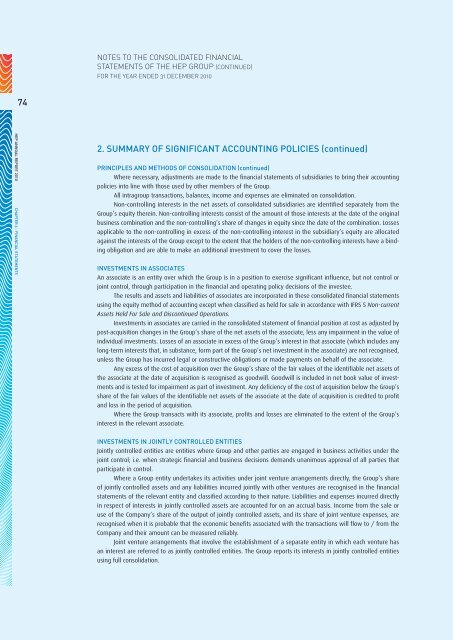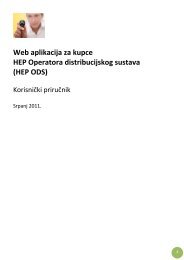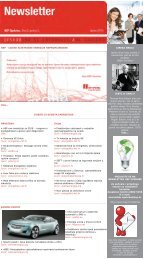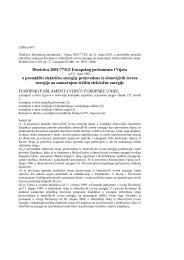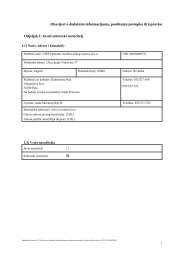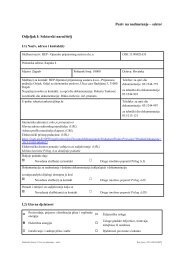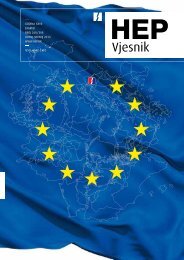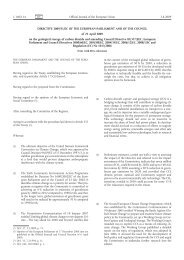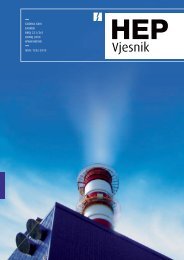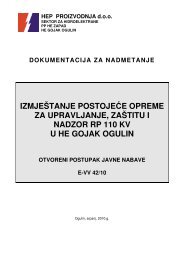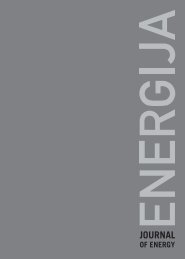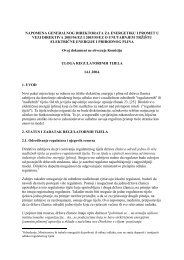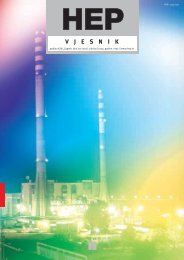DRAVA, KUPA, RJE»INA, LOKVARKA, LI»ANKA LIKA, DOBRA ...
DRAVA, KUPA, RJE»INA, LOKVARKA, LI»ANKA LIKA, DOBRA ...
DRAVA, KUPA, RJE»INA, LOKVARKA, LI»ANKA LIKA, DOBRA ...
You also want an ePaper? Increase the reach of your titles
YUMPU automatically turns print PDFs into web optimized ePapers that Google loves.
HEP ANNUAL REPORT 2010<br />
74<br />
CHAPTER 6 - FINANCIAL STATEMENTS<br />
NOTES TO THE CONSOLIDATED FINANCIAL<br />
STATEMENTS OF THE HEP GROUP (CONTINUED)<br />
FOR THE YEAR ENDED 31 DECEMBER 2010<br />
2. SUMMARY OF SIGNIFICANT ACCOUNTING POLICIES (continued)<br />
PRINCIPLES AND METHODS OF CONSOLIDATION (continued)<br />
Where necessary, adjustments are made to the financial statements of subsidiaries to bring their accounting<br />
policies into line with those used by other members of the Group.<br />
All intragroup transactions, balances, income and expenses are eliminated on consolidation.<br />
Non-controlling interests in the net assets of consolidated subsidiaries are identified separately from the<br />
Group’s equity therein. Non-controlling interests consist of the amount of those interests at the date of the original<br />
business combination and the non-controlling’s share of changes in equity since the date of the combination. Losses<br />
applicable to the non-controlling in excess of the non-controlling interest in the subsidiary’s equity are allocated<br />
against the interests of the Group except to the extent that the holders of the non-controlling interests have a binding<br />
obligation and are able to make an additional investment to cover the losses.<br />
INVESTMENTS IN ASSOCIATES<br />
An associate is an entity over which the Group is in a position to exercise significant influence, but not control or<br />
joint control, through participation in the financial and operating policy decisions of the investee.<br />
The results and assets and liabilities of associates are incorporated in these consolidated financial statements<br />
using the equity method of accounting except when classified as held for sale in accordance with IFRS 5 Non-current<br />
Assets Held For Sale and Discontinued Operations.<br />
Investments in associates are carried in the consolidated statement of financial position at cost as adjusted by<br />
post-acquisition changes in the Group’s share of the net assets of the associate, less any impairment in the value of<br />
individual investments. Losses of an associate in excess of the Group’s interest in that associate (which includes any<br />
long-term interests that, in substance, form part of the Group’s net investment in the associate) are not recognised,<br />
unless the Group has incurred legal or constructive obligations or made payments on behalf of the associate.<br />
Any excess of the cost of acquisition over the Group’s share of the fair values of the identifiable net assets of<br />
the associate at the date of acquisition is recognised as goodwill. Goodwill is included in net book value of investments<br />
and is tested for impairment as part of investment. Any deficiency of the cost of acquisition below the Group’s<br />
share of the fair values of the identifiable net assets of the associate at the date of acquisition is credited to profit<br />
and loss in the period of acquisition.<br />
Where the Group transacts with its associate, profits and losses are eliminated to the extent of the Group’s<br />
interest in the relevant associate.<br />
INVESTMENTS IN JOINTLY CONTROLLED ENTITIES<br />
Jointly controlled entities are entities where Group and other parties are engaged in business activities under the<br />
joint control; i.e. when strategic financial and business decisions demands unanimous approval of all parties that<br />
participate in control.<br />
Where a Group entity undertakes its activities under joint venture arrangements directly, the Group’s share<br />
of jointly controlled assets and any liabilities incurred jointly with other ventures are recognised in the financial<br />
statements of the relevant entity and classified according to their nature. Liabilities and expenses incurred directly<br />
in respect of interests in jointly controlled assets are accounted for on an accrual basis. Income from the sale or<br />
use of the Company’s share of the output of jointly controlled assets, and its share of joint venture expenses, are<br />
recognised when it is probable that the economic benefits associated with the transactions will flow to / from the<br />
Company and their amount can be measured reliably.<br />
Joint venture arrangements that involve the establishment of a separate entity in which each venture has<br />
an interest are referred to as jointly controlled entities. The Group reports its interests in jointly controlled entities<br />
using full consolidation.


